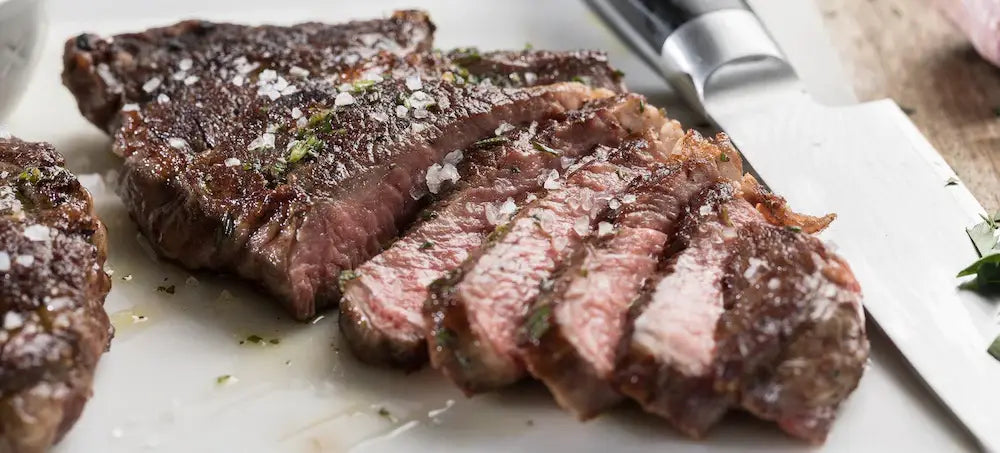Reverse Seared Steak Recipe

Learning how to reverse sear a steak is simple—keep the inside of the steak evenly cooked from edge to edge and the outside nice and crispy. It’s particularly useful for thick cuts—like a ribeye—and grass-fed steaks, which need to be cooked a bit differently than those fed grain.
So, what’s the method behind this madness? It’s as simple as it sounds—instead of searing at the beginning of the cooking process, it’s the last step. Contrary to a once-held popular belief, searing does not actually lock in the juices of a piece of meat, it simply adds flavor. And when meat is cooked fast at a high temperature—which is what happens when you sear—the meat doesn’t cook evenly. To accomplish edge-to-edge consistency and a perfectly browned crust, this technique starts the steaks in a low oven and ends with quick high heat in a pan.
Ingredients
Utensils
- Baking sheet
- Wire rack
- Meat thermometer
- Cast-iron skillet
Instructions
Preheat the oven to 250℉. Season both sides of the steaks with salt and pepper.
Line a rimmed baking sheet with aluminum foil. Set a wire rack inside the baking sheet and lay the steaks across the rack.
Roast the steaks until the internal temperature registers 10 to 15℉ lower than your ideal final temperature for the meat. Final temperatures and their corresponding doneness include—120℉ for rare steaks, 130℉ for medium rare, 140℉ for medium, and 150℉ for medium well.
Before removing the steaks from the oven, heat a tablespoon of oil in a cast iron or stainless steel skillet on a high burner. When the steaks have achieved your desired temperature and the oil is smoking, add them—with a tablespoon of butter—into the skillet. Rotate the pan occasionally to allow the butter to swirl around the steaks, lifting them occasionally so that the melted fat surrounds the meat.
When this first side of the steaks is browned—which should take about 45 seconds—flip the steaks and brown the other side. Then quickly sear each edge.
Remove from heat and serve. With the reverse sear, no rest period is required.



